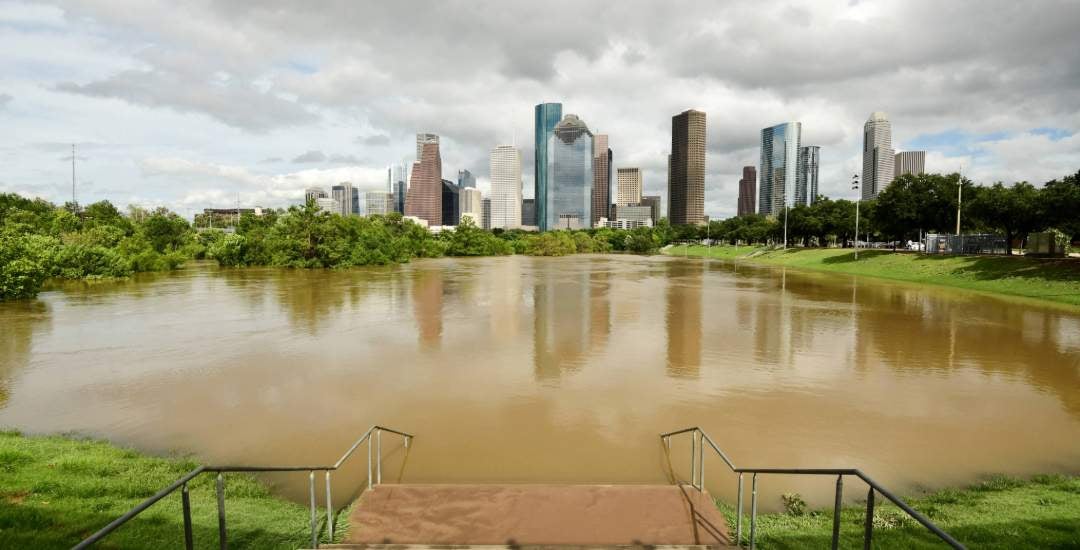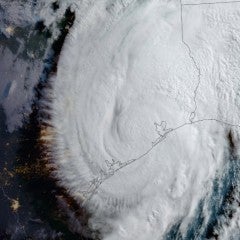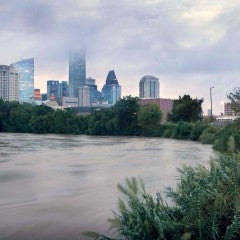Seeking Solutions is a special editorial series by the Kinder Institute’s Urban Edge highlighting the people, organizations and initiatives bringing positive change to communities in the Greater Houston region.
The report said that for every $1 donated toward a disaster, just 10 cents supports resilience, risk reduction, preparedness, reconstruction and recovery efforts combined. The Greater Houston Disaster Alliance, a partnership between the Greater Houston Community Foundation and United Way of Greater Houston, is trying to fill that gap.
The partnership was officially announced in June 2023 with the help of an investment by Enbridge and Phillips 66. Its focus is to provide intermediate and long-term recovery funds to complement public resources and private philanthropy after a disaster.
“We adapt and focus based on what the disaster is, whether it’s natural, man-made, hyperlocal or widespread,” said Diana Zarzuelo, the Greater Houston Community Foundation’s vice president of community philanthropy. “We’re always informing our strategy with real-time community needs.”
Including the May derecho and Hurricane Beryl in July of this year, Harris, Fort Bend and Montgomery counties have experienced 28 federally declared disasters in the past 41 years, with 10 occurring in the last decade.
“Climate change is a reality, and extreme weather events are a reality that Houston has to contend with,” Zarzuelo said. “From a philanthropic standpoint, we have the opportunity to lead in Houston. We want to attract local philanthropy to care about disaster recovery and resiliency work.”
The Disaster Alliance began to take shape in the wake of 2017’s Hurricane Harvey and during the COVID-19 pandemic in 2020. The Greater Houston COVID-19 Recovery Fund committed $18.4 million to 87 nonprofit partners. The Disaster Alliance reached a memorandum of understanding during Winter Storm Uri, and the Houston Harris County Winter Storm Relief Fund raised $17.5 million for 61 nonprofit partners. Those funds mostly go toward emergency financial assistance and home repairs in ZIP codes with disproportionate numbers of low-income residents.
“That was an intense two-year period,” Zarzuelo said. “We started exploring how to maintain our capacity to do this work really well, and also to do the work that needs to be done in between times of disaster. But also, how do we reduce the repeated harm caused on our most vulnerable neighbors? How do we start to be more proactive and talk about resiliency in a more meaningful way? That’s where the concept of the Greater Houston Disaster Alliance came to be.”
Thus far, the Disaster Alliance's nonprofit partners have received $5.4 million in funding for Hurricane Beryl and about $3 million for the derecho. The Federal Emergency Management Agency has committed over $451 million to individual assistance applications filed after Hurricane Beryl. For the derecho, over $241 million in individual and household was approved for 95,289 individual assistance applications.
Mary Vazquez, the vice president of community outreach at the United Way of Greater Houston, said some residents with property damage are not receiving aid in a timely fashion. Part of the problem is that government applications can be confusing.
“It’s all about the nuance in how you answer questions,” Vazquez said. “It’s not clear-cut, and folks who really need the assistance are not being helped.”
Vazquez said one way that could be improved is having FEMA assign more case managers in the field and providing more support at recovery centers so applications are properly filled out. In the meantime, the Disaster Alliance is working with data science nonprofit Connective, the city of Houston and Harris County to administer a damage and needs survey immediately after a disaster. The survey serves as an entry point for people to access resources.
“That targets the most vulnerable communities,” Zaruzuelo said. “When we have the data of where the households are and what the damage assessment is from their point of view, that rolls into how do we get people emergency financial assistance and home repair services right away. Where we sit in terms of challenges, it’s getting the money in and getting the money out.”
As a strategic research partner of the Greater Houston Community Foundation’s Understanding Houston, a regional indicator initiative, the Kinder Institute will release a report on disaster preparedness next year.
“Many of us are well aware that over 40% of Houstonians don’t have $400 to weather the next disaster or the next flat tire,” Zarzuelo said. “With Beryl and the derecho back to back, people have lost food twice. For some people that is a week or two weeks’ worth of wages. That is a huge financial hit on households that are already financially insecure.
“I’m excited for the Kinder Institute’s upcoming data on how disasters are impacting people and what the recovery process is. That’s going to be even better data for us to have to make the case and amplify the need for public and private resources to support recovery.”




